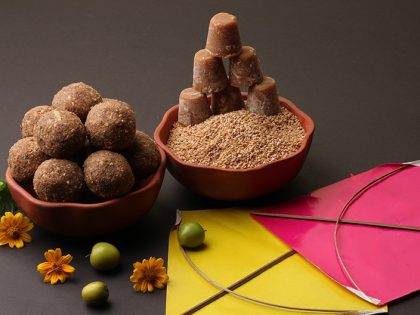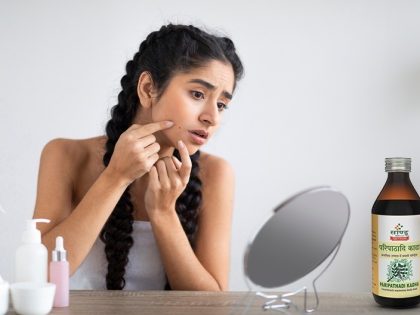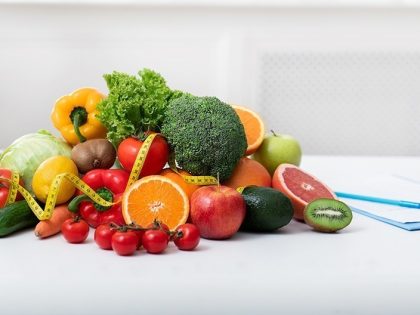Welcome – UTTARAYAN With Ancient Energy Bar – Tilgul Laddus

In Ayurveda, as there is a daily regimen or routine recommended, there is also a seasonal regimen. The reason is as simple as it gets-
As our external environment changes our body’s internal environment also gets affected. ‘Ritucharya’ (seasonal regimens) mentioned in Ayurveda was devised depending on the movements of the Sun. They are nothing but adaptation techniques so our body can maintain homeostasis at all times. This time period of ‘Makar Sankranti’ is the celebration of ‘Uttarayan’ – Uttara ( North) and Ayana (Movement) of the Sun. It provides us with best quality sunlight to restore the bodies Vit D reserves that the body can utilize up to a year. The food prepared and indulged in during this time also reflects this thought.
When we talk about the ‘Faral’ of Diwali season or the ‘Tilgul ladoos’ of Makar sankranti we are enriching our bodies to have good stores of energy and immunity for the year ahead.
Let us understand this using the perfect example of Makar Sankranti. This day forward we often find large quantities of freshly prepared Tilgul ladoos in our homes.As our external environment changes our body’s internal environment also gets affected. ‘Ritucharya’ (seasonal regimens) mentioned in Ayurveda was devised depending on the movements of the Sun. They are nothing but adaptation techniques so our body can maintain homeostasis at all times. This time period of ‘Makar Sankranti’ is the celebration of ‘Uttarayan’ – Uttara ( North) and Ayana (Movement) of the Sun. It provides us with best quality sunlight to restore the bodies Vit D reserves that the body can utilize up to a year. The food prepared and indulged in during this time also reflects this thought.
When we talk about the ‘Faral’ of Diwali season or the ‘Tilgul ladoos’ of Makar sankranti we are enriching our bodies to have good stores of energy and immunity for the year ahead.
Let us understand this using the perfect example of Makar Sankranti. This day forward we often find large quantities of freshly prepared Tilgul ladoos in our homes.
Thus, it acts as an appetite enhancer and digestive. It helps to lower bad cholesterol and inflammation. The Ayush Ministry also recommends using sesame oil for nasal instillation (Nasya) and oil pulling (Gandusha) as immunity promoting measures.
So just, imagine what this combo, together, does to your body.
- Packed with nutrients, tilgul ladoos provide support to our musculoskeletal system and keep joint troubles away as the cold environment affects joints and muscles also.
- This is the coldest period of the winter season so they help in generating heat in our bodies.
- Til and Gud make the perfect combination like an energy bar, which not only satisfies the Digestive fire but also balances the doshas and enhances our immunity.
- It is also beneficial in keeping the skin and hair nice and soft during this cold and dry season.
- Not only Tilgul but also Chikki, Gulachi poli, etc, serve the same purpose.
Some of the Best things come in small packages.’ Tilgul ladoos’ are perfect examples.
So, it’s good to remember in the back of our minds, this Makar Sankranti we are not exchanging just sweets but – health and positivity for the rest of the year ahead.
For more information watch our #SAYYESTOAYURVEDA series on YouTube, Facebook and Instagram. You can also visit our official website under Ayurveda: The Science of Life for more videos.
Article By: Dr.Madhuri Bhogan (MD Ayurveda)






